
Pseudothelphusidae is a family of freshwater crabs found chiefly in mountain streams in the Neotropics. They are believed to have originated in the Greater Antilles and then crossed to Central America via a Pliocene land bridge. Some species of this family are troglobitic.
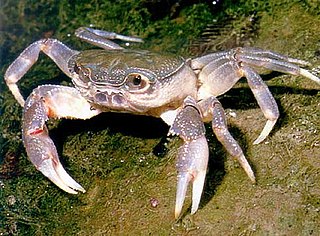
Potamon is a genus of freshwater or semiterrestrial crabs mainly found from Southern Europe through the Middle East, and as far east as north-western India. The only exception is the North African P. algeriense, which also is the only potamid of mainland Africa. Twenty species are currently recognised. These crabs are omnivores that have a broad ecological tolerance. The adult Potaman reach up to 50 mm in size during their 10-12 year life span.
Neostrengeria is a genus of crabs in the family Pseudothelphusidae, containing the following species:
Odontothelphusa is a genus of crabs in the family Pseudothelphusidae, containing the following species:
Ptychophallus is a genus of crabs in the family Pseudothelphusidae.
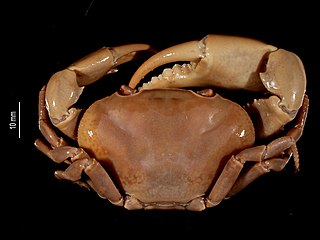
Pseudothelphusa is a genus of crabs in the family Pseudothelphusidae, containing the following species:
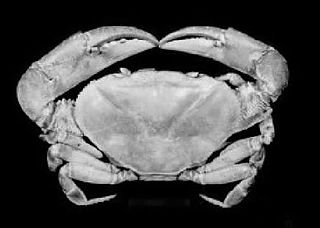
Fredius is a genus of crabs in the family Pseudothelphusidae, containing the following species:
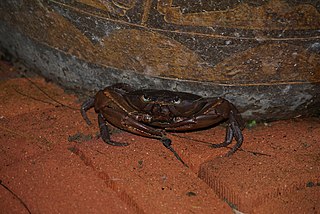
Epilobocera is a genus of crabs in the family Epiloboceridae. It is the only genus in its family; this taxonomic arrangement follows the revision of the family Pseudothelphusidae by Álvarez and colleagues.
Chaceus is a genus of crabs in the family Pseudothelphusidae, containing the following species:

Guinotia is a monotypic genus of freshwater crabs in the family Pseudothelphusidae, containing only the species Guinotia dentata, commonly known as cyrique. They have few predators. Found in the West Indies, they are easily caught and thus are used locally as a food source.
Hypolobocera is a genus of freshwater crabs in the family Pseudothelphusidae, found in Venezuela, Colombia, Ecuador, and Peru. The major and future threats to these species include human-induced habitat loss/degradation and water pollution.
Lindacatalina is a genus of crabs in the family Pseudothelphusidae, containing the following species:
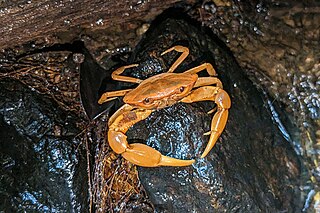
Microthelphusa is a genus of crabs in the family Pseudothelphusidae, containing the following species:
Moritschus is a genus of crabs in the family Pseudothelphusidae, containing the following species:
Spirothelphusa is a genus of crabs in the family Pseudothelphusidae, containing the following species:
Strengeriana is a genus of crabs in the family Pseudothelphusidae, containing the following species:
Tehuana is a genus of crabs in the family Pseudothelphusidae, containing the following species:
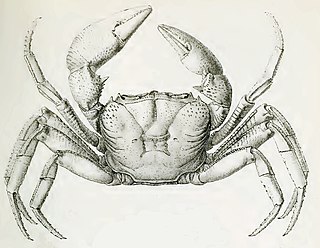
Seychellum alluaudi is a species of freshwater crab endemic to the Seychelles, and the only true freshwater crab in that country. It lives in rainforest streams on the archipelago's granitic high islands. Although it may be abundant, little is known about its biology. If its habitat were to decline in quality, S. alluaudi might become endangered, but it is currently listed as Vulnerable on the IUCN Red List.

Pisinae is a subfamily of crabs in the family Epialtidae, comprising the following genera:
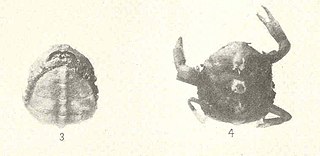
Tunicotheres is a monotypic genus of crabs in the family Pinnotheridae, and Tunicotheres moseri is the only species in the genus. This crab lives commensally in the atrial chamber of a small ascidian. It is found in the tropical western Atlantic Ocean, the Caribbean Sea and the Gulf of Mexico.









